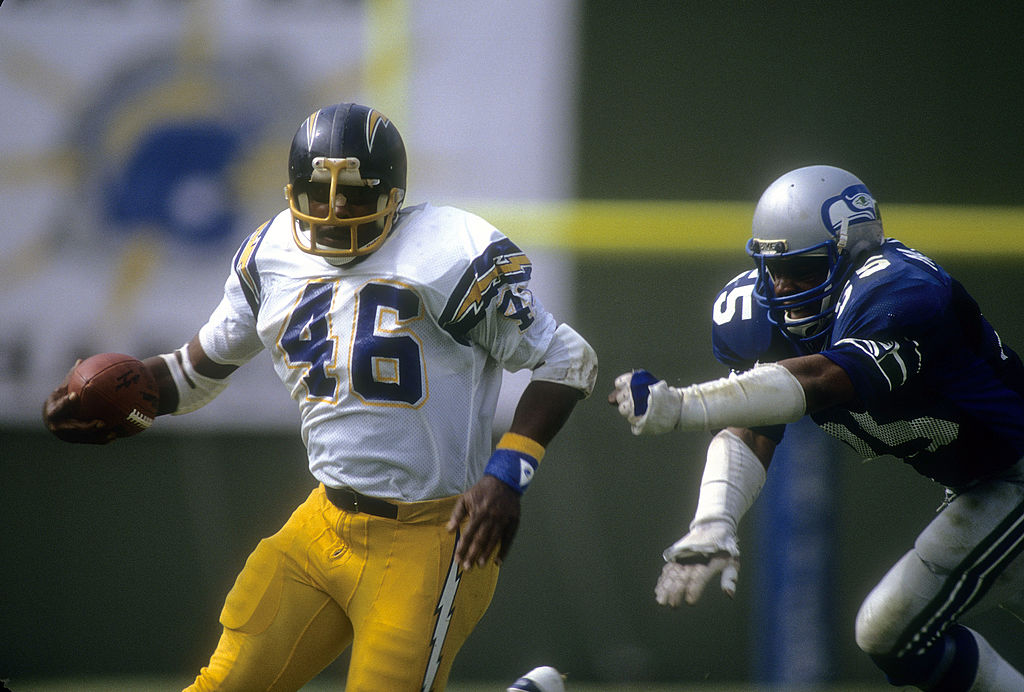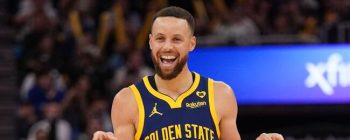NFL
Chuck Muncie Battled Demons in the NFL Before Using Them to Help Others

Chuck Muncie was the silent star in Don ‘Air’ Coryell’s passing attack. While quarterback Dan Fouts was throwing the ball all over the place to Charlie Joiner, Wes Chandler, and Kellen Winslow, Muncie was silently, but very effectively, chewing up yardage as the San Diego Chargers running back. Muncie’s career was marred by substance abuse. Cocaine, alcohol, and marijuana issues plagued Muncie and eventually forced him from the NFL, but those issues later helped him help others battling those same addictions before he passed away in 2013.
Who was Chuck Muncie?
RELATED: Where is Former Chargers Star LaDainian Tomlinson?
Chuck Muncie was a 6-foot-3, 25-pound running back who played his college ball for the California Golden Bears. In high school, Muncie quit football three games into his senior year after suffering a concussion. He played basketball, however, and earned an athletic scholarship to play at Arizona Western Junior College.
According to the Pittsburgh Post-Gazette, Muncie was told his scholarship would improve if he played football and did well at the school. He played so well, he never wound up playing basketball there. After one year at junior college, he earned a scholarship to play football at Cal.
At Cal, Muncie had 12 total touchdowns in his first year, followed by 11 the next. In his senior year, Muncie racked up 1,460 rushing yards and had 13 touchdowns on the ground. He added two more scores through the air. He finished second in the Heisman Trophy Award voting to Archie Griffin in 1975.
Muncie’s life in the NFL
Chuck Muncie, a big, bruising back with speed, was selected by the New Orleans Saints with the third overall pick in the 1976 NFL draft. Muncie made the first of his three Pro Bowl selections in 1979. During that season, he rushed for 1,198 yards and 11 touchdowns. He also played a big role in the passing game, catching 40 passes for 308 yards.
Muncie grew unhappy in New Orleans and after an 0-4 start to the 1980 season, Muncie was shipped to the San Diego Chargers. The Chargers were a high-octane offense and Muncie fit right in. In his first two full seasons with the Chargers, 1981 and 1982, Muncie made the Pro Bowl. In 1981, Muncie led the NFL with 19 rushing touchdowns.
Muncie played with the Chargers from 1980-1984. His ground game was the perfect complement to Dan Fouts’ passing game. With the Chargers, Muncie rushed for 43 touchdowns and 3,309 yards. In 1984, Muncie played one game with the Chargers and was traded to the Miami Dolphins. The trade, however, was voided after Muncie failed a drug test and was suspended by NFL Commissioner Pete Rozelle. He never played a game in the NFL again.
Life after football
Chuck Muncie admitted he had some of the worst practice habits in football. He felt he could get by on talent alone. Muncie said he would do drugs the night before a game, staying up until 2 or 3 in the morning and “doing the things that you shouldn’t be doing.” In 1989, Muncie was busted for selling cocaine and sentenced to 18 months in federal prison.
Muncie, who died of a heart attack on May 13, 2013, said that time in prison gave him time to reflect. “Thank goodness I was where I was,” Muncie said in 2012. “That’s my mission now, to reach out a hand and say, ‘come on, let’s get up on your feet.’ A lot of people get knocked down a lot and not everyone knows how to get back up. Once in a while, you’ve got to help somebody get back up.”
Upon his release, Muncie worked closely with the Boys & Girls Clubs of America. He also established the Chuck Muncie Youth Foundation which helped mentor at-risk youth and provide camps for chronically injured children. “Everything I did and everything I went through in my life has allowed me to do the things I’m doing now,” Muncie once told USA Today. I’ve been able to tell these guys, ‘Been there, done that, and if you keep doing these things, this is what’s going to happen.'”











